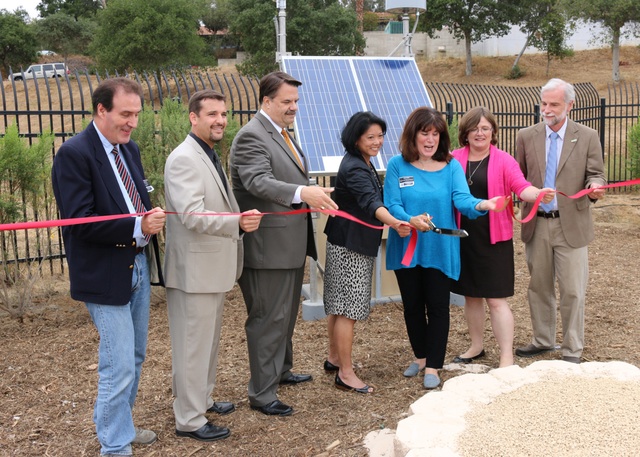Can We Be Ready for the Big One?
Santa Barbara County Unveils Early Warning System for Earthquakes

If an earthquake were to hit the Salton Sea, which sits right atop the San Andreas Fault, Santa Barbara County residents could have as long as 90 seconds to prepare — if and when an early-warning system being tested across the state scores enough funding, and sees the right software upgrades, to get fully implemented. That system now has seven stations within the county, including one at the Office of Emergency Management (OEM), where county officials held a demonstration on Thursday and discussed how much benefit that extra 90 seconds could bring.
“The psychological impact of earthquakes can’t be overestimated,” said Lucy Jones, a seismologist for the United States Geological Survey (USGS), which has spearheaded the alert program with some help from universities and federal agencies. For example, Jones said, more than one million Japanese citizens downloaded the country’s alert cellphone app in the wake of the devastating 2011 earthquake; China, Taiwan, Mongolia, and Turkey offer similar notifications.
Once notified — likely via location-based text messages, similar to Amber Alerts — people would have enough time to prepare themselves mentally and practically, Jones said, singling out the particular benefits for construction workers, elevator passengers, hospitals, schools, fire stations, and the oil industry, which could close their pipelines and stop the thousands of trains that haul their product before they derail. The system would help prevent economic damage, too, Jones said, noting the continuing financial repercussions suffered by New Orleans years after Hurricane Katrina.
The sensor systems — which lie approximately eight feet underground, about 12 feet apart — can recognize when an earthquake has begun, allowing officials to then transmit a warning faster than the speed at which the earthquake travels, Jones said. The seven systems in Santa Barbara County — the six others are found at various fire stations — were installed a few months ago at the USGS’s expense and join others installed throughout the state.
Although government officials and scientists could see the warning, if an earthquake were to hit tomorrow, the system wouldn’t be ready to notify the public. A full rollout hinges on construction costs (an estimated $23.1 million to cover all of California) and annual operating costs (about $11 million). The approximately $20 million spent over the past eight years on the existing sites came mostly courtesy of the USGS and the Federal Emergency Management Agency, with some help from a nonprofit organization started by the founder of Intel.
Supervisor Janet Wolf (who attended junior high school and high school with Jones) cited Santa Barbara’s history of earthquakes in praising the program, which she said would be “a key step in building the county’s resilience to natural disasters.”



